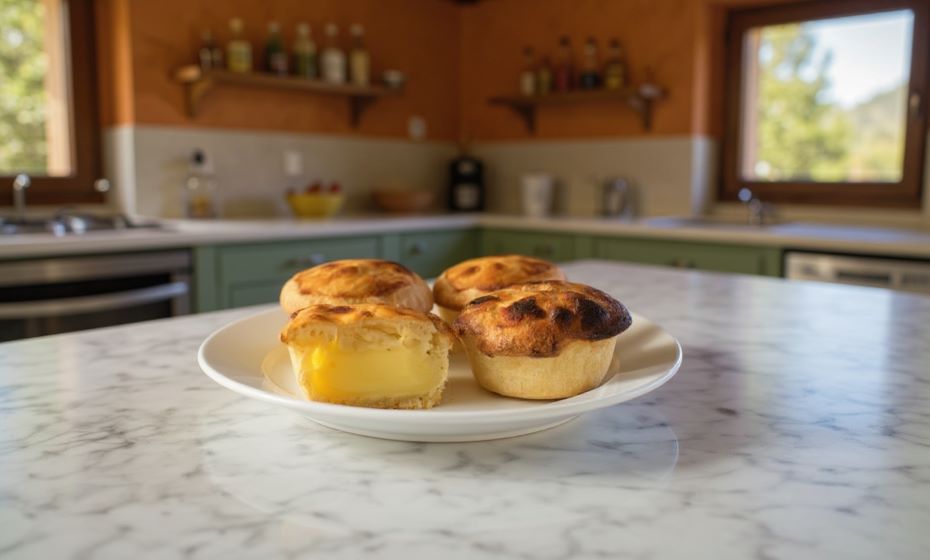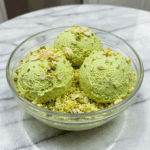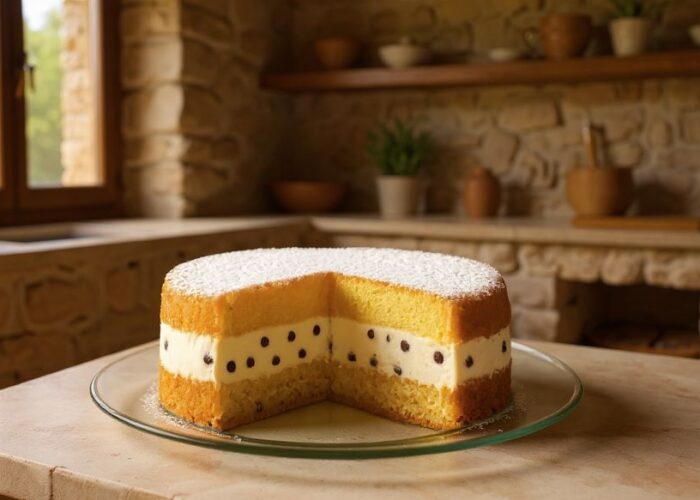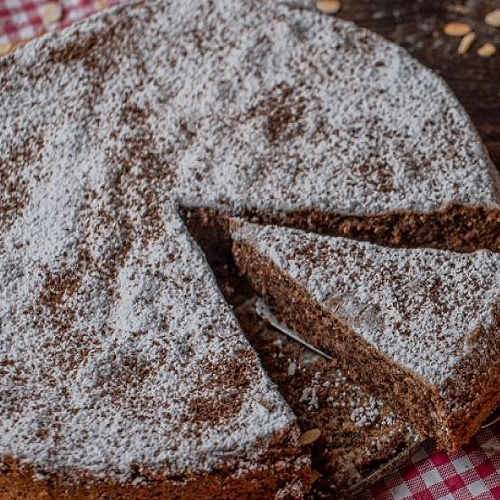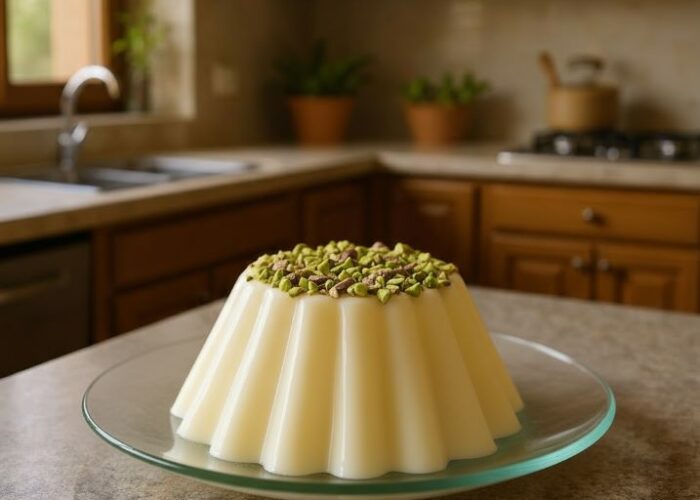Pasticciotto Leccese: The Sweet Soul of Southern Italy
Few desserts capture the spirit of southern Italy like Pasticciotto Leccese. Golden on the outside, creamy in the center, and warm to the touch, this small pastry carries generations of history, family pride, and the comforting flavors of Salento, the sun-drenched heel of Italy’s boot.
The story begins in the 18th century in Galatina, near Lecce. Local legend says pastry chef Andrea Ascalone was making a large cake when he had leftover dough and custard. Instead of wasting it, he pressed the scraps into a small mold, filled it with cream, and baked it. He called it “un pasticcio” a mess or mishap.
That “mistake” became a masterpiece. Townspeople loved its tender crust and warm, custard-filled center. Word spread quickly across Lecce and the Salento peninsula. Soon, Pasticciotto Leccese became a morning ritual and a symbol of local sweetness.
A Timeless Taste Beyond Lecce
Traditionally eaten warm from the oven, the shortcrust pastry (pasta frolla) gives a delicate crunch before melting into the velvety, vanilla-scented custard. Every bakery in Lecce has a secret touch. Some add lemon zest for brightness. Others enrich the cream with a hint of liqueur.
It is often paired with a caffè leccese, strong espresso poured over ice and sweetened with almond milk. This combination makes breakfast feel both luxurious and deeply rooted in southern simplicity.
Over time, Pasticciotto became more than a pastry. It became a cultural emblem of Salento. Locals serve it to guests, bring it to family gatherings, and gift it during festivals. Each bite tells a story of resilience and resourcefulness, turning simple ingredients, flour, sugar, eggs, milk into something extraordinary.
Even today, bakers in Lecce guard their recipes closely. Each claims their pasticciotto is the “real one.” But they agree on one thing: it must be enjoyed fresh, preferably still warm, when the custard sighs softly under its flaky shell.
While Pasticciotto Leccese remains a symbol of Puglia, it has traveled far beyond its origins. You can find it across Italy and abroad, baked by Italian expats craving a taste of home. Modern versions experiment with chocolate, pistachio, or ricotta. Yet the classic custard version still reigns supreme.
Flavor Variations
While the classic Pasticciotto Leccese is filled with smooth vanilla custard, bakers across Salento love to play with flavor. Each variation tells a slightly different story, some born from family secrets, others from modern imagination. Here are a few creative to try:
Chocolate Pasticciotto (Pasticciotto al Cioccolato)
A favorite for chocolate lovers, this version replaces part or all of the vanilla cream with rich chocolate custard. You can make it by stirring a few tablespoons of cocoa powder or melted dark chocolate into your pastry cream. Some bakeries even use chocolate shortcrust pastry for a double indulgence, a bittersweet contrast that melts beautifully on the tongue.
Tip: Add a pinch of espresso powder to deepen the chocolate flavor.
Pistachio Pasticciotto (Pasticciotto al Pistacchio)
A modern star from southern Italy, especially in Sicily and Puglia. The filling combines crema pasticcera with smooth pistachio paste or cream, giving it a pale green color and nutty, elegant taste. Top with chopped roasted pistachios for crunch and a beautiful finish. Best enjoyed with an iced almond coffee for a taste of summer in Lecce.
Ricotta Pasticciotto (Pasticciotto alla Ricotta)
In this rustic and older variation, the filling is made with sweetened ricotta, flavored with lemon zest and a touch of cinnamon or chocolate chips. It’s lighter, less sweet, and feels like a cross between pasticciotto and cannoli. A true comfort food that reflects southern Italy’s love for simple, fresh ingredients.
Limoncello Cream Pasticciotto
For a bright, summery version, infuse your custard with a splash of Limoncello liqueur or extra lemon zest. It gives the pastry a light citrus aroma and a refreshing twist that pairs beautifully with coffee or tea.
Amarena Cherry Pasticciotto
This twist adds a little surprise at the heart — a spoonful of Amarena cherry or sour cherry preserve tucked into the custard before sealing. The fruit’s tart sweetness cuts through the cream perfectly, adding color and a burst of flavor. It’s a romantic variation often served during holidays or special occasions.
Serving
The best way to enjoy Pasticciotto Leccese is exactly how the locals do, warm, fresh from the oven, when the golden crust is still crisp and the custard inside is soft and creamy. In Lecce, mornings begin with the scent of these pastries filling the air as people stop by their favorite bakery for one, paired with a caffè leccese, espresso poured over ice and sweetened with almond milk. The contrast between the warm pastry and cool, nutty coffee is pure southern Italian magic.
If you’re serving pasticciotti at home, reheat them gently in the oven for a few minutes to bring back that bakery-fresh texture. They pair beautifully with cappuccino or even a simple glass of cold milk. For brunch or dessert, try presenting them on a rustic wooden board or a pretty platter with a light dusting of powdered sugar and a few berries on the side. A drizzle of pistachio cream or melted chocolate can turn them into an elegant centerpiece worthy of a café window.
Storage
If you happen to have a few Pasticciotti Leccesi left (though they tend to disappear fast!), you can easily store them for later enjoyment. Once they’ve cooled completely, place them in an airtight container at room temperature for up to two days, they’ll keep their tender texture and buttery flavor. For longer storage, refrigerate them for up to four days, then simply warm them in a low oven for 5–10 minutes to bring back that irresistible, freshly baked feel.
Pasticciotti also freeze quite well. Wrap each pastry tightly in plastic wrap and store them in a freezer-safe bag or container. They can be kept in the freezer for up to 2 months without losing much of its flavor or texture. When you’re ready to enjoy, let them thaw overnight in the fridge, then reheat gently in the oven. The crust will crisp up again, and the custard will turn velvety and fragrant almost as if you’d just baked them.
If you’re planning ahead for a special occasion, you can even prepare the dough and custard a day in advance. Keep the pastry dough wrapped in plastic in the fridge and store the custard in a sealed container. When you’re ready to bake, simply assemble and pop them into the oven.

